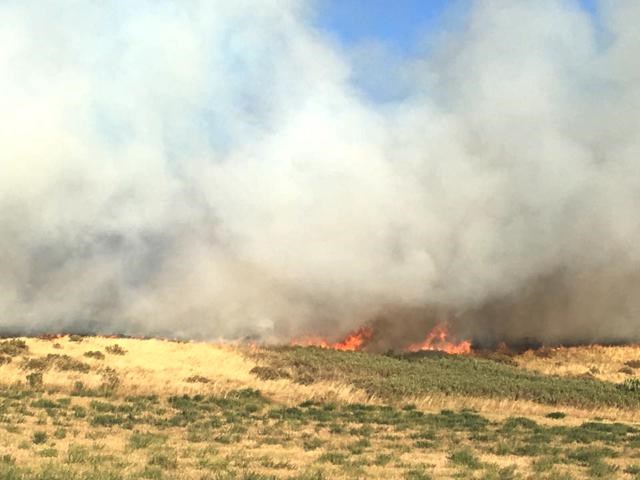Strong winds helped to fuel a monster prairie fire near Glentworth on September 4. But thanks to an immense community volunteer effort, the fierce fire was contained.
At least three ranches were affected. Six Mile Ranch was the hardest hit losing 3,200 acres of its best fall grazing grass. The fire was reportedly started in the daytime by a spark from a swather in a neighbouring field that was rapidly spread through some of the field by the strong wind and into grass pastureland. Very quickly the fire grew out of control on the tinder dry prairie grass. It developed into a fire that was almost eight miles wide.
It was difficult not to notice the huge wall of dark flames being whipped up by the high winds that day. The community rallied to help fight the fire. Word spread rapidly by phone and Facebook. Volunteer fire departments from Mankota, Glenworth and Kildeer arrived with grass fire-fighting equipment. Over 300 ranchers in the area flocked to the scene to help bringing their own water tanks. “Watching rural families come together is truly amazing,” said Corinne Gibson, whose ranch was most affected.
Some of the volunteers controlled the advance of flames. It was difficult to see the fire line because of the intense smoke. Graders plowed furrows to stop the spread of the fire. Others patrolled the perimeters to keep the fire contained. Still others in the local community pitched in in the background by bringing food, coffee and water for those battling the wild blaze.
By the early evening, water bomber planes arrived from Prince Alberta to assist. Volunteers continued fighting the fire until about 10 p.m. when it was brought under control. The few remaining hotspots were monitored overnight and into the next day.
Miraculously, there were no animals injured on the cattle pasture that burned and no human injuries. The Gibsons were able to move most of their 300 cattle out of the pasture area when the fire started. However, the frightened cattle scattered and the family spent days searching for them and rounding them up. The Gibsons are now assessing the damage having lost their best grass to the fire. They face an immediate problem of where to locate these cattle this fall and how to feed them over winter.
The RMs in the south area are some of the driest in the province with practically no rain since April. The RMs issued fire bans back in July following extreme drought conditions this summer. This fire demonstrated how fast a fire can get out of control in dry conditions.




